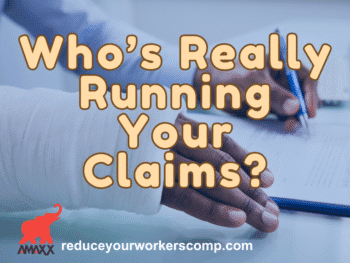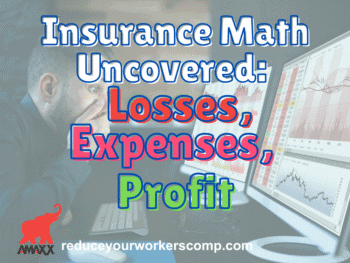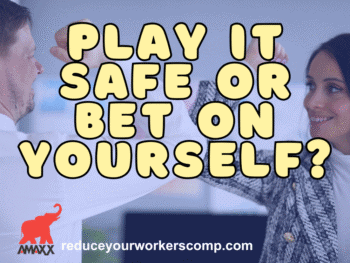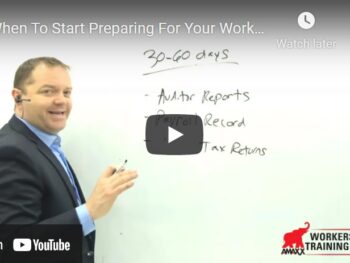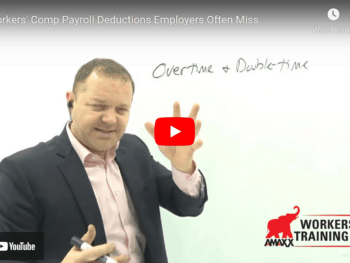“Recreational Activity Injury” or “In the Course of Employment Injury”
How Would You Decide: Oregon Worker’s “Saunter” Across Employer’s Parking Lot to Make Bank Deposit Was Not a “Recreational” Activity and Occurred “In the Course of” the Employment, But Case Remanded to Determine if Injury Actually “Arose From the Employment.” Here’s what Tom Robinson, J.D., writer for Lexis Nexis Workers Comp Law Center reports.
Here’s What Happened
During a paid morning break from her work at her employer’s hospital, claimant decided to deposit a personal check at a credit union located at a different part of the employer’s campus. She left the hospital, crossed a street, and started to cut across a parking lot. While in the lot, she slipped on ice and fell, fracturing her right ankle. Claimant filed a workers’ compensation claim and the employer denied it on the ground that the injury did not arise out of and in the course of the employment.
The administrative law judge (ALJ) determined that the injury was compensable and reversed the denial. Agreeing, in relevant part, with a decision by an administrative law judge, the Workers’ Compensation Board determined that because claimant’s errand was not a recreational or social activity performed primarily for her personal pleasure [Ore. Rev. Stat. § 656.005(7)(b)(B)], and because claimant’s employer controlled the parking lot where the fall occurred, the injury was sufficiently work-related to be compensable. The employer appealed.
Here’s What The Court Decided:
In Legacy Health Systems v. Noble, 2009 Ore. App. LEXIS 1814 (Nov. 18, 2009), the Court of Appeals of Oregon agreed that claimant’s injury did not occur during a social or recreational activity and that it occurred “in the course of the employment,” but, because the board failed to determine whether the injury arose “out of” claimant’s employment, the decision was reversed and remanded. Turning first to the issue of social and/or recreational activities, the appellate court observed that as the Supreme Court had explained (in Roberts v. SAIF, 196 Ore. App. 414, 417, 102 P3d 752 (2004), aff’d, 341 Ore. 48, 136 P3d 1105 (2006)), the exclusion for “recreational or social activities” was a legislative reaction to Beneficiaries of McBroom v. Chamber of Commerce, 77 Ore. App. 700, 713 P2d 1095, rev. denied, 301 Ore. 240, 720 P.2d 1279 (1986), a case in which the Court of Appeals found compensable the death of a travelling salesman who, on a business trip to Los Angeles, became extremely inebriated and drowned in his hotel’s hot tub. The appellate court also noted that the typical “recreational activity” case involved “off-the-job group recreational or social activities such as picnics, office parties, or organized or spontaneous sports or games” [Roberts, 196 Ore. App. at 416 (citing cases)].
The appellate court indicated that here, claimant’s activity did not fit the established definition, nor was it the kind of activity that the court had previously recognized as “recreational.” Instead, claimant was walking to the bank, while on the clock. The court stated that by no stretch of the imagination could it conclude that claimant was refreshing her strength and spirits after toil or engaged in play, diversion, or entertainment.
The court continued that to occur “in the course of” employment, “the time, place, and circumstances of the injury must justify connecting the injury to the employment,” that injuries sustained while an employee was going to or coming from the place of employment generally did not occur within the course of employment. One exception, however, related to company parking lots. Generally, an injury sustained on premises controlled by the employer while an employee was coming to or going from work occurs within the “course of employment.” The court also saw no reason to distinguish, for purposes of the parking lot rule, between a worker’s injury while going to or coming from work at the beginning or end of the work day, on the one hand, and an injury incurred while going to or coming from lunch, on the other. Likewise, the court saw no distinction between lunch and a break. (workersxzcompxzkit)
The court observed that in order to prove compensability, however, a claimant must establish both parts of the unitary work-connection test, including whether the injury arose “out of” the employment. Citing various authorities, the court stated that an employer is not liable for any and all injuries to its employee, irrespective of their cause. Nor does the fact that an employee was injured on the premises during working hours, of itself, establish a compensable injury. The employee must still show a causal link between the occurrence of the injury and a risk connected with his or her employment. The court agreed with the employer that neither the ALJ nor the Board addressed the “arising out of” aspect of the work-connection test. The matter had to be remanded, therefore, for such a consideration.
See generally Larson’s Workers’ Compensation Law, §§ 13.04, 13.05, 22.02, 22.03.
Tom Robinson, J.D. is the primary upkeep writer for Larson’s Workers’ Compensation Law (LexisNexis) and Larson’s Workers’ Compensation, Desk Edition (LexisNexis). He is a contributing writer for California Compensation Cases (LexisNexis) and Benefits Review Board – Longshore Reporter(LexisNexis), and is a contributing author to New York Workers’ Compensation Handbook(LexisNexis). Robinson is an authority in the area of workers’ compensation and we are happy to have him as a Guest Contributor to Workers’ Comp Kit Blog. Tom can be reached at: compwriter@gmail.com.
http://law.lexisnexis.com/practiceareas/Workers-Compensation
TO DOWNLOAD OR LISTEN TO FREE AUDIO PODCAST click here: http://www.workerscompkit.com/gallagher/mp3
By: Anthony Van Gorp, private investigator with 25 years experience.
Do not use this information without independent verification. All state laws vary. You should consult with your insurance broker about workers’ comp issues.
©2009 Amaxx Risk Solutions, Inc. All rights reserved under International Copyright Law. If you would like permission to reprint this material, contact Info@WorkersCompKit.com

